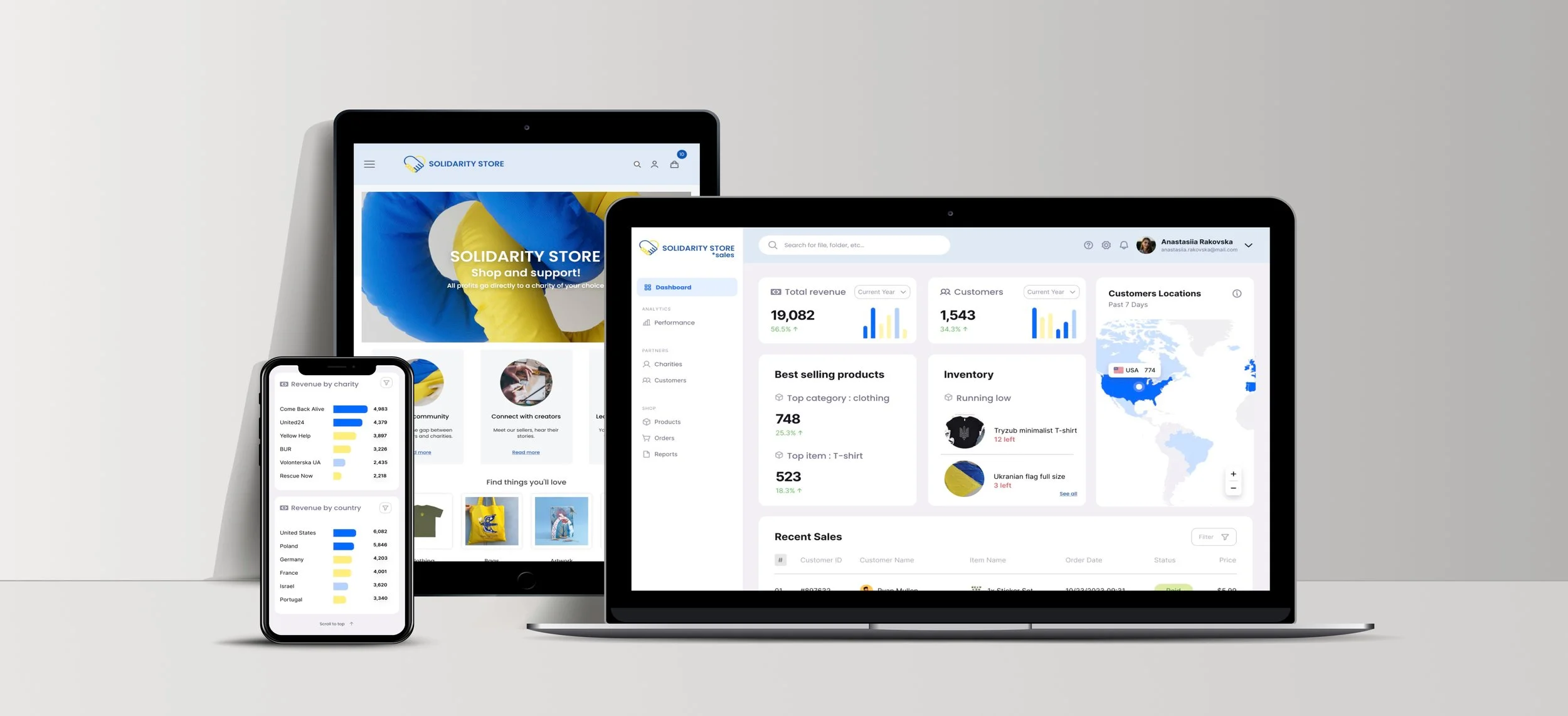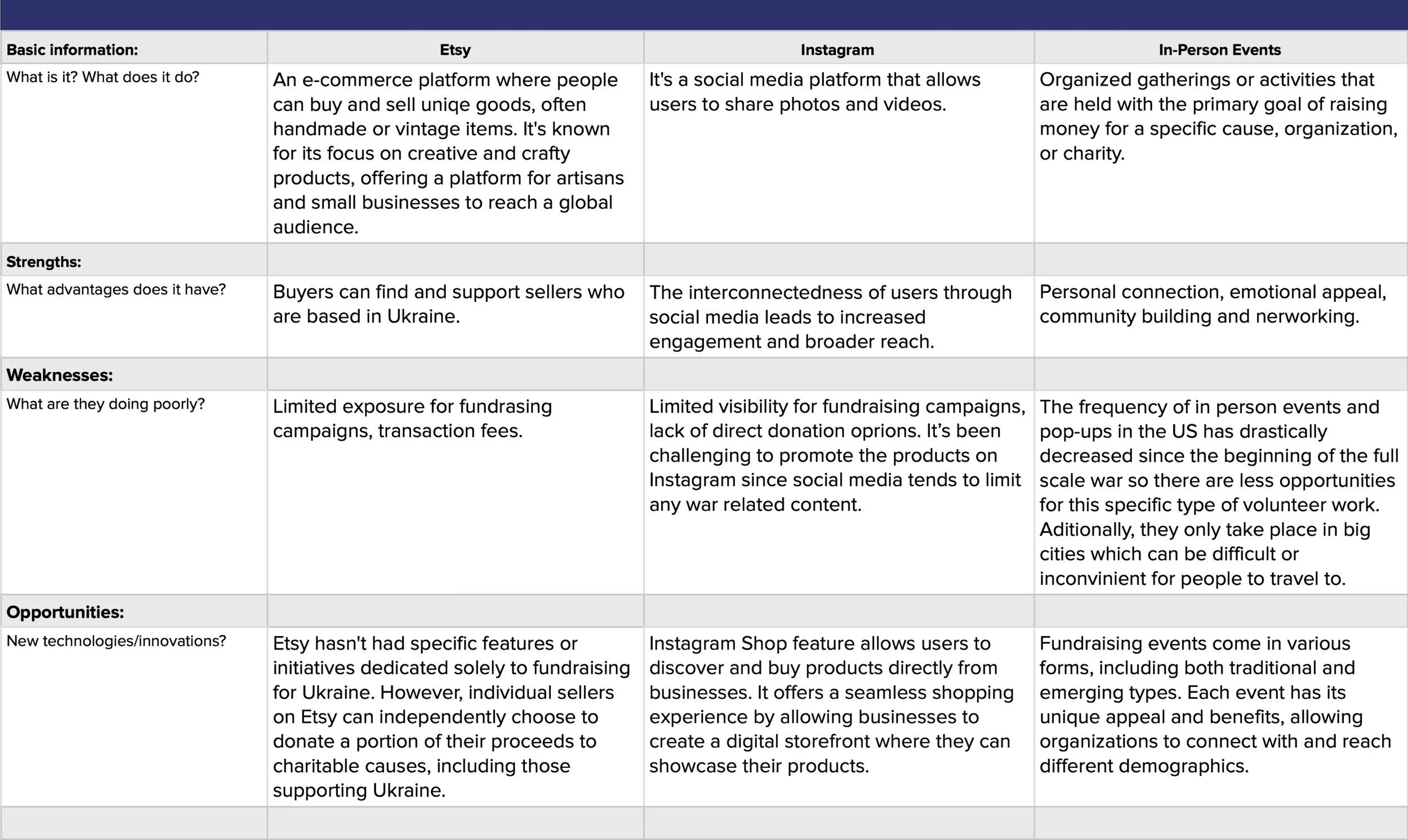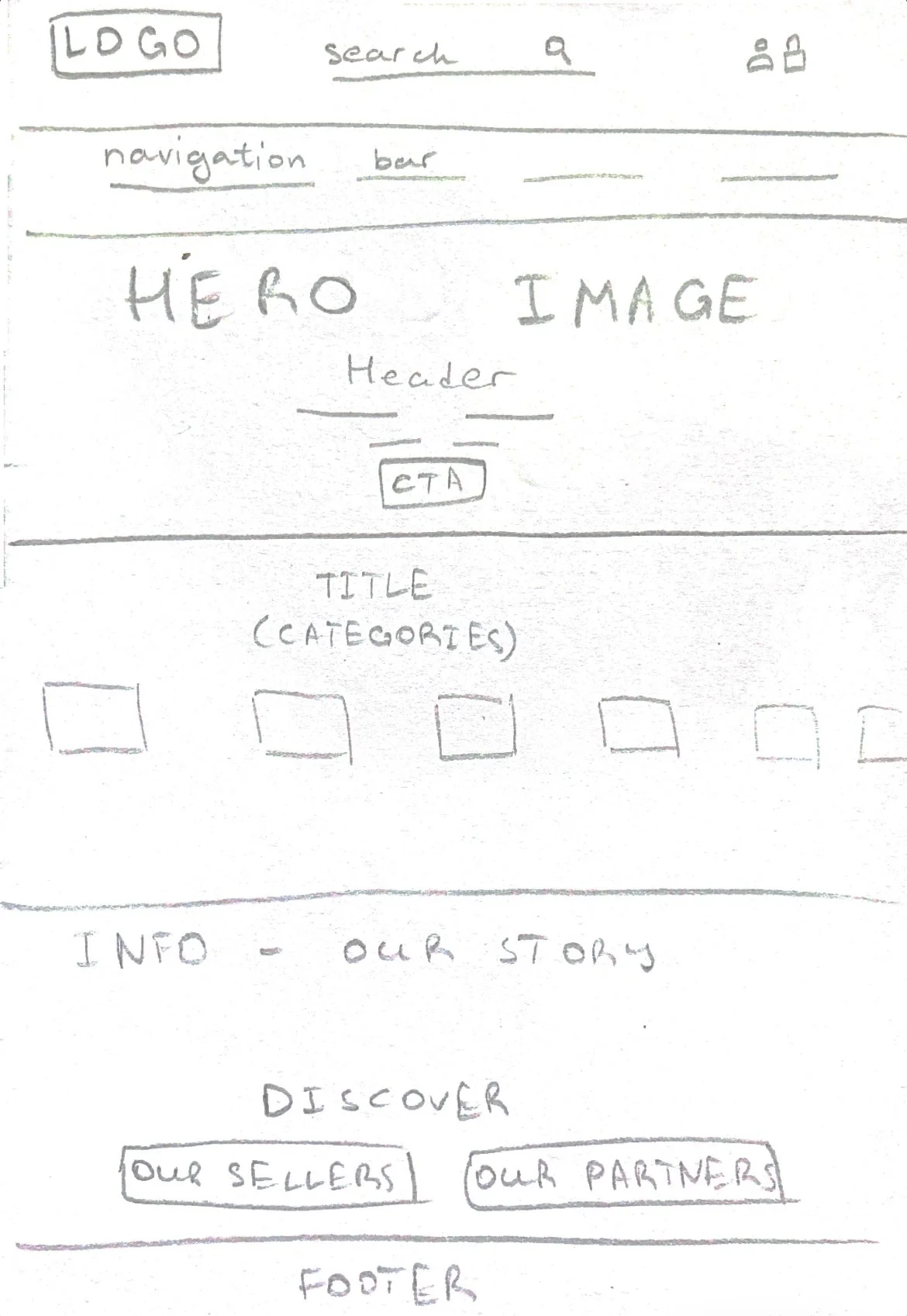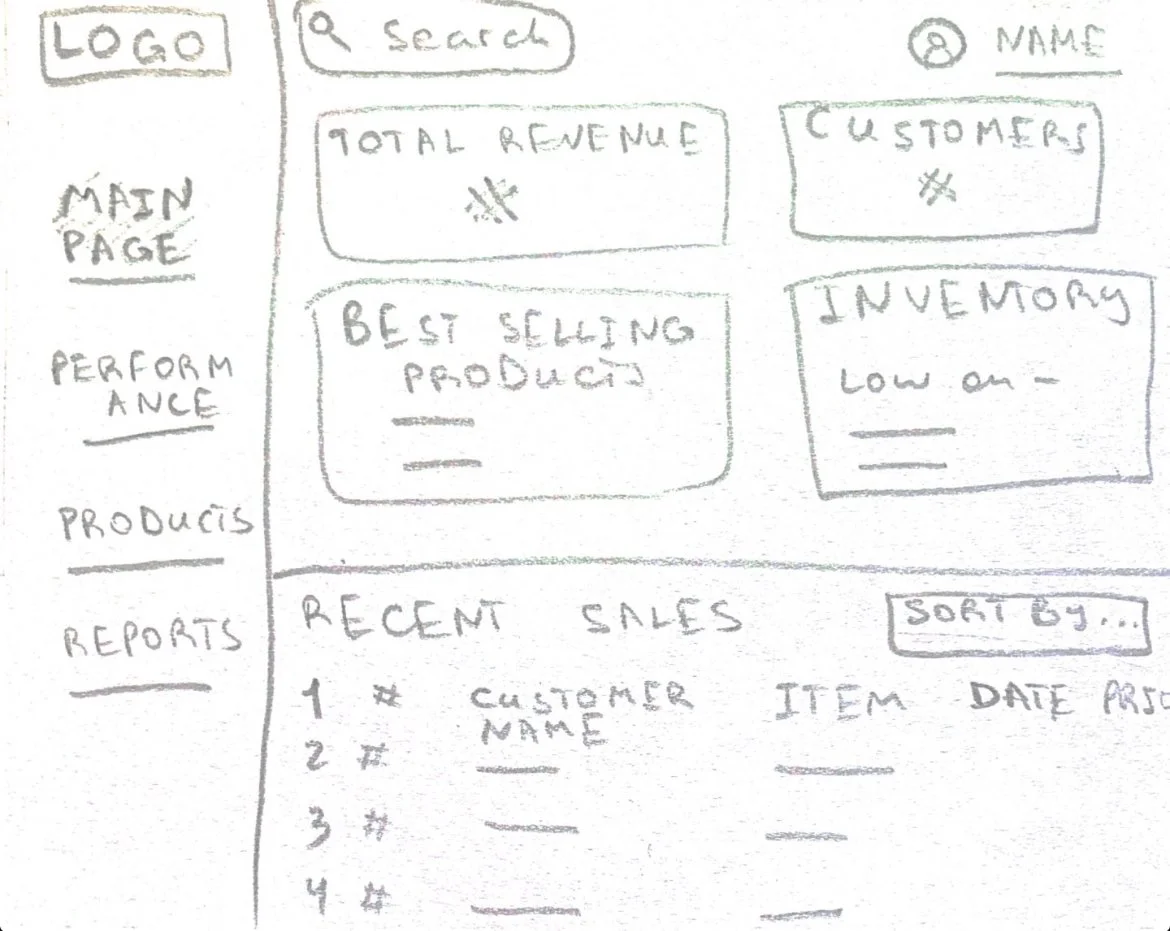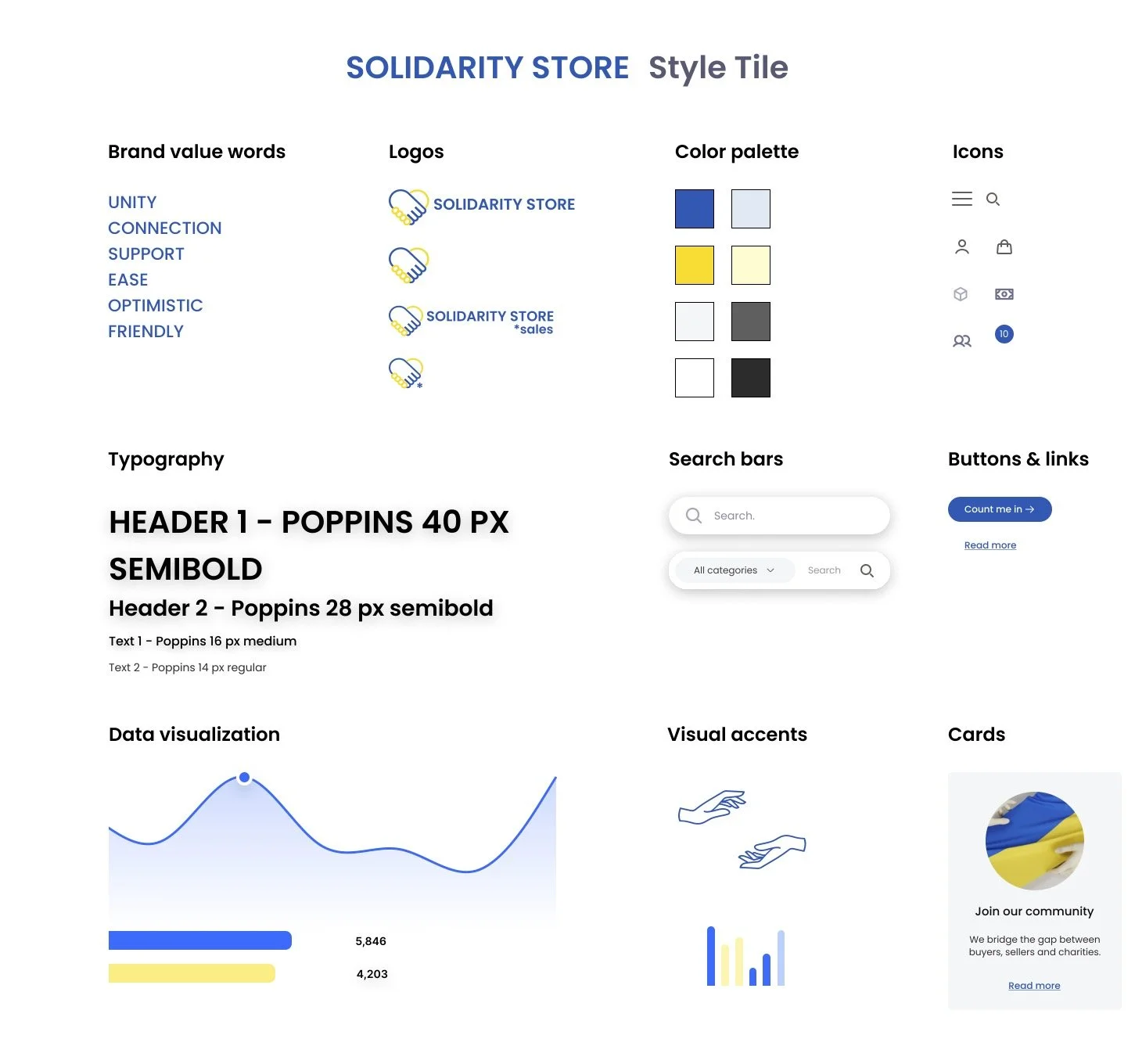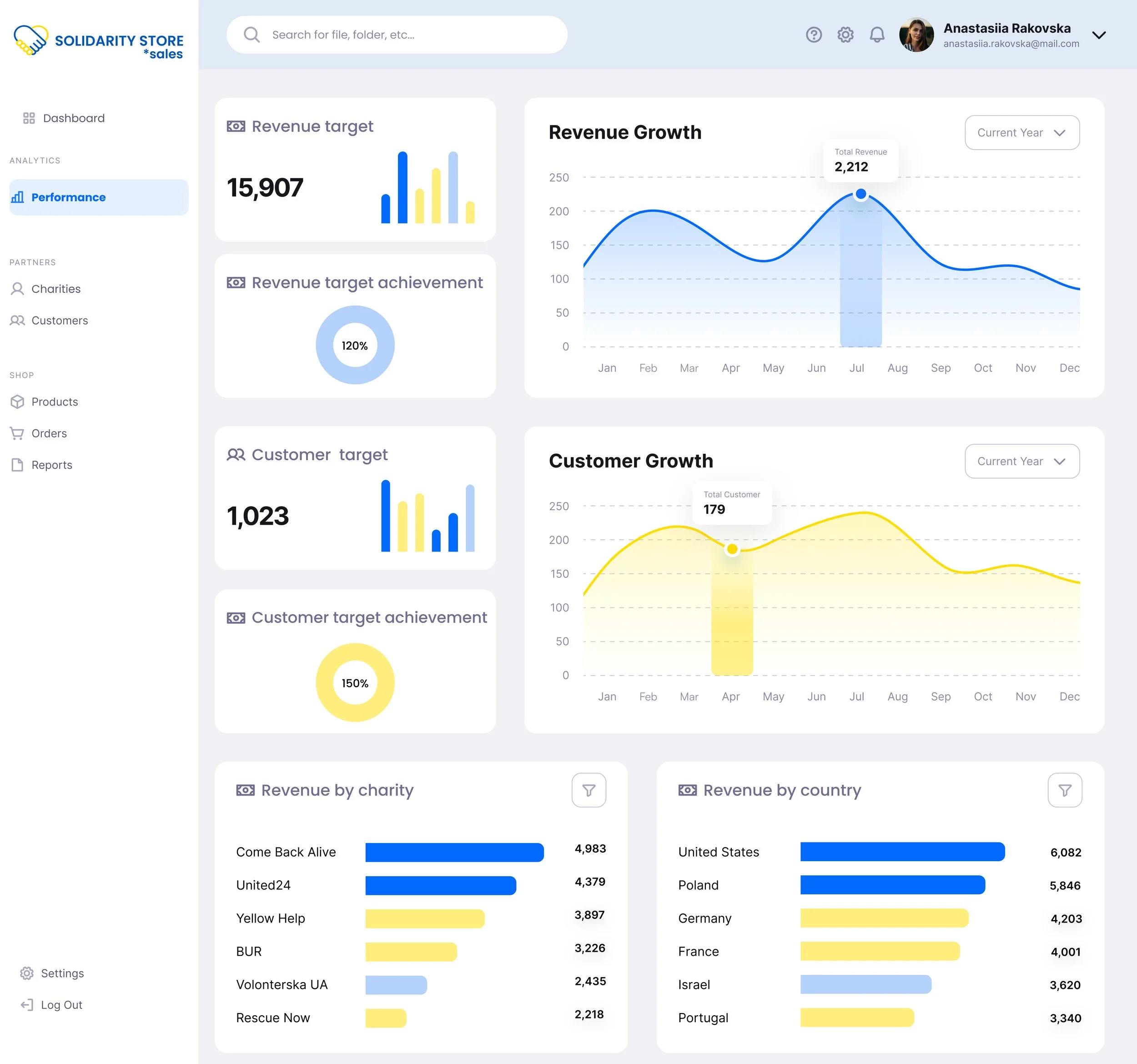

Solidarity Store
Responsive design • 4 weeks/80 hours
Introduction
With the ongoing war in Ukraine, it’s been increasingly difficult to bring people's awareness towards the issues the citizens of Ukraine are facing, and donations have been decreasing. Many people have been using all their resources and creativity to come up with ways to raise funds for charities, big and small. One of the ways people are doing that is by selling their arts and crafts either online (on Instagram or Etsy) or in person at different events, then donating the profits to charities. So my goal was to optimize and simplify their process and create the connecting platform between the creators and the causes the proceeds are going to.
I was solving the problem for the charities (hopefully increasing the donations), but my main focus was on the creators and the salespeople. For many of them, it’s volunteer work they dedicate their free time and their own resources to, so I wanted to take some of the load off their shoulders by taking care of the logistics. The new solution would take care of promoting their products and eliminate the extra steps by having customers choose the charity they’d like to donate to directly at checkout.
Research
As for research, I conducted competitive analysis, user interviews, and also conducted some secondary research on the issues people face through social media, published interviews, etc.
I conducted 4 user interviews, both in person and remote. The interviewees were Ukrainian women aged 22-32, based in the US, who craft unique handmade products (clothing, jewelry, souvenirs, etc.) for sale and then donate the proceeds to Ukrainian-based charities.
These were the questions I asked them:
Tell me a bit about yourself: where are you from, where do you live, and which field do you work in?
Describe your volunteer work. What drives you? How long have you been doing it?
Walk me through your process of creating products for sale. How do you come up with ideas? Where do you get materials?
How do you showcase your products - in person, at events, pop-ups, on Instagram, Etsy, or other online platforms?
When selling online, which metrics are important for you to track?
Which products do you make seem to be the most popular?
What challenges do you face while volunteering or donating?
What do you wish to see more of when it comes to volunteering for and supporting Ukraine?
Which charity organizations or fundraisers do you think are the most important to focus on right now?
To conclude, I want to say that I personally admire what you do. I think it’s very inspiring to see people uniting to help your country as it strives towards freedom and victory. Can you share how you stay positive and strong during these times?
User interview insights:
What I learned was that most of the people I interviewed started volunteering by creating merchandise for sale. Prior to the full-scale war, they weren’t engaging in these activities professionally or even as a hobby. They simply found ways to help raise awareness and funds in any way they could. Especially with the general public’s attention decreasing, the volunteers have been getting more and more creative.
I also found out what the creation process normally looks like: some people spend time after work buying supplies and creating clothes, accessories, and jewelry. Others found that it is cheaper to buy existing products from small vendors in Ukraine and resell them in the US.
When it came to secondary research, I studied resources available online, mainly video interviews of independent volunteers, as well as volunteer organizations based in Ukraine. The videos showed their daily process of how they volunteer, how they collect donations, and what they do with them (e.g., buy ammunition and deliver it to battlefields).
The main issue currently is the fading support of the general public. It’s been more and more difficult to raise money compared to the beginning of the full-scale war.
I also performed competitive analysis and these were my findings:
Define
User personas
This project's main goal was to develop a dashboard for a non-profit. However, I was working with a non-existing platform. Based on that, as well as the time constraint, I decided to prioritize the following tasks:
- create the brand's identity and the UI component library
- design a responsive homepage for the main website to illustrate what the platform itself looks like
- make a responsive dashboard for my main user persona, visualizing the essential data metrics
When working on the dashboard, I created a roadmap to puzzle out which data metrics would be important to the user and why.
Design
Sketches
The branding process was based on the feelings and emotions that volunteer work evokes. The design concept and elements I created were heavily influenced by those same qualities.
For the color palette, I went with the colors of the Ukrainian flag - blue and yellow - and their variations, as well as neutral colors to make the primary colors stand out.
To create the logo, I sketched different shapes that expressed the branding words and came up with two hands in a handshake making the shape of a heart.
Visuals
Main website
Dashboards - desktop
Dashboards - mobile
Testing
I conducted usability testing by having participants engage with the prototype and getting their feedback on the wireframes, visual design, data visualization, and information architecture in particular. According to the testing insights, at times the brand colors (especially yellow) weren't always readable or prominent, which means they wouldn’t pass the accessibility standards. Additionally, the participants’ questions or confusion while navigating the websites helped in further iterations to make the end product more usable.
Conclusion
To conclude, overall, I can describe this product as both a passion project of mine that resonated highly with users and could potentially help a lot of people by being a connecting link between the parties involved. It was my first time working with dashboards, so approaching it was challenging at first, but I learned a lot about data visualization throughout the process, and I can apply that knowledge to my future projects.
I’m most proud of the feedback I got from the users about me creating the actual fundraising platform for the sellers and artisans and how excited they were about it. Simplifying their lives while also raising awareness and bringing in more donations to the people in need has definitely been the most gratifying aspect of my work so far.

